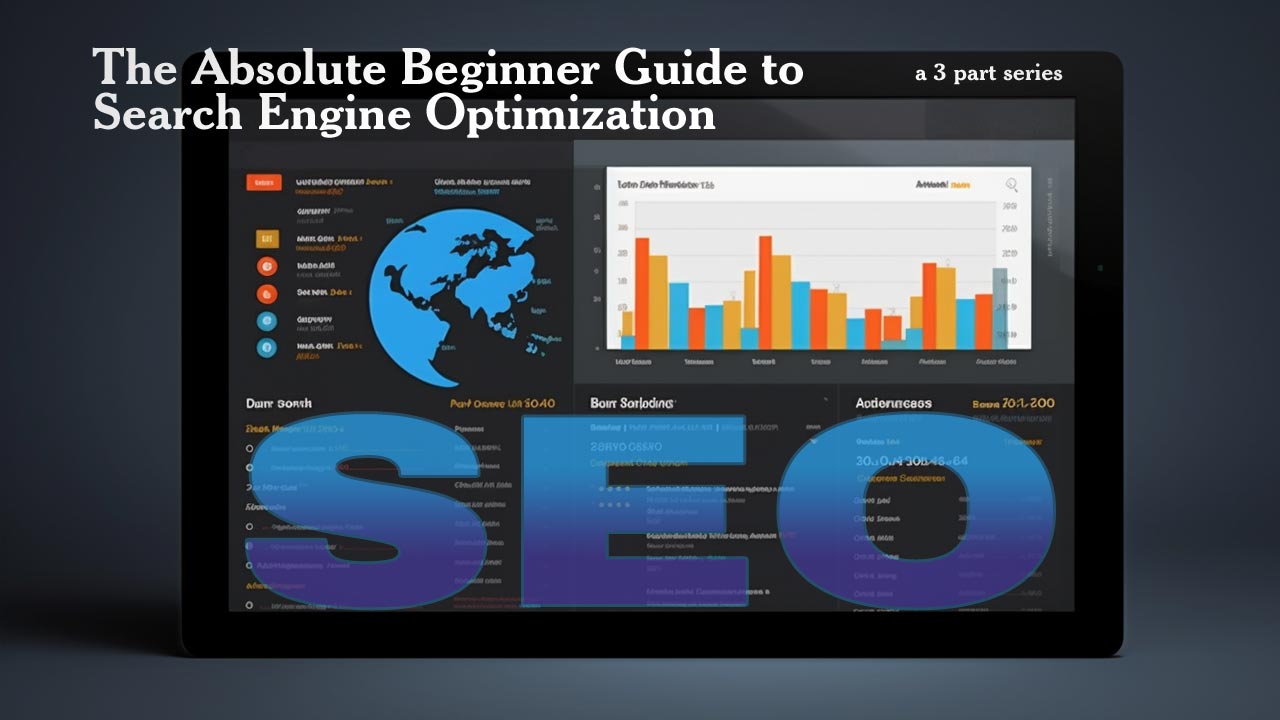This is Part 3 of a 3 Part Series.
Table Of Contents
- Local SEO: Dominating Your Local Market
- Measuring SEO Success and Adapting Your Strategy
- Conclusion: SEO as a Continuous Journey
Local SEO: Dominating Your Local Market
Local SEO, as the name suggests, is a branch of SEO that focuses on optimizing a website to be found in local search results. It is a strategy that businesses use to market their products and services to local customers at the exact time they’re looking for them online.
Why Local SEO is Important
Local SEO is crucial for smaller businesses and brick-and-mortar stores operating in specific geographical areas. Unlike national or international SEO, local SEO is centered around ranking in searches in a specific location.
According to a study done by Forbes, 95% of smartphone users have used their device to perform local searches, out of which 61% called the business, and 59% visited. This demonstrates the importance of optimizing your website for local search.
Key Components of Local SEO
Here are some of the critical components of local SEO:
- Google My Business (GMB) Optimization: GMB is a free tool that lets you manage how your business appears on Google Search and Maps. It includes adding your business name, location, and hours; monitoring and replying to customer reviews; adding photos; learning where and how people are searching for you, and more.
- Local Citations: Citations are online mentions of your business, which usually display your business name, address, and phone number—collectively known as NAP (Name, Address, Phone). They play a key role in improving your local search results.
- Online Reviews: Online reviews are crucial for local SEO. Not only do they help to enhance your business’s visibility, but they also have the potential to influence potential customers. Encourage your customers to leave reviews about their experiences and respond to them diligently, whether they’re positive or negative.
- Local Keywords: It’s essential to optimize your site and content for local keywords. This includes not only including the name of your town, city, or region in key parts of your site but also writing content that relates to the local area.
- Localized Content: Creating high-quality content that speaks to your local audience can help to improve your local SEO. This could include local news stories, information about local services, or content around your local community.
- Local Link Building: Building relationships with other local businesses and websites is a key part of local SEO. This can lead to link exchanges, guest blogging opportunities, and other partnership opportunities that can boost your local SEO.
Local SEO is an essential strategy for businesses looking to drive geographically-relevant traffic to their website. It helps businesses promote their products and services to local customers at the exact time they’re looking for them online. By focusing on specific local-SEO to-dos, businesses can extend their reach to potential customers and clients in their own backyard.
Measuring SEO Success and Adapting Your Strategy
When it comes to SEO, it’s not enough to just do. It’s also important to understand the impact of what you’re doing. That’s where SEO measurement comes in. Measuring SEO success is vital to determine whether your efforts are paying off or if you need to rethink your strategy.
Why Measuring SEO Success is Important
In any marketing effort, being able to quantify your success is crucial. It helps you understand what’s working, what’s not, and where you can make improvements. In SEO, measurement allows you to make data-driven decisions and ensures that your strategy aligns with your business goals.
Key SEO Metrics to Track
There are various metrics that you can track to measure SEO success. Here are a few key ones:
- Organic Traffic: This is the number of visitors coming to your website from organic search results. An increase in organic traffic typically indicates successful SEO efforts.
- Keyword Rankings: Tracking where your website ranks in search engine results for targeted keywords can help you understand the effectiveness of your keyword strategy.
- Bounce Rate: This is the percentage of visitors who leave your website after viewing only one page. A high bounce rate may indicate that your content isn’t relevant to what they’re looking for.
- Conversion Rate: This metric measures the percentage of visitors who complete a desired action on your site, such as making a purchase or filling out a form. A high conversion rate usually indicates that your site’s user experience is good and that your content is meeting the needs of your visitors.
- Page Load Time: As mentioned earlier, page load time can significantly impact SEO. It’s essential to track this metric and work on improving it if necessary.
- Backlinks: The number of high-quality sites that link back to your website can significantly influence your SEO success. More quality backlinks typically mean higher authority and better rankings.
SEO Tools for Measurement and Analysis
There are various SEO tools available that can help you measure and analyze your SEO efforts. Some of the most popular ones include:
- Google Analytics: This is a powerful tool that can track all the key metrics mentioned above and many more.
- Google Search Console: This tool provides insights into how Google views your website and can help you identify issues that might affect your rankings.
- SEMrush: SEMrush is an all-in-one SEO tool that offers various features, including keyword research, competitor analysis, and more.
- Moz Pro: This tool provides a suite of SEO tools, including keyword research, link building, site audits, and page optimization insights.
- Ahrefs: Ahrefs is a toolset for SEO and marketing. It has tools for backlink research, organic traffic research, keyword research, content marketing, and more.
Measuring SEO success is a vital part of your overall SEO strategy. It helps you understand the impact of your efforts and guides you in making necessary adjustments to improve your rankings and visibility. By tracking key metrics and using the right tools, you can create an effective and successful SEO strategy.
Conclusion: SEO as a Continuous Journey
SEO is not a one-and-done deal. It’s a continuous journey. Search engine algorithms are constantly evolving, and so should your SEO strategy. Just because you’ve reached the first page of the search engine results does not mean you can now rest on your laurels. SEO requires constant attention and adaptation to stay ahead of the game.
Embrace the Process
The nature of SEO means that you often have to play the long game. Seeing results from your SEO efforts can take time, so it’s crucial to remain patient and consistent. Remember, the goal of SEO isn’t just to increase your site’s visibility—it’s also to improve the overall user experience. And a better user experience can lead to higher engagement, more conversions, and ultimately, increased revenue.
Continual Learning and Adaptation
Given the ever-changing landscape of SEO, one must strive to stay informed about the latest best practices, algorithm updates, and emerging trends. Join SEO communities, follow SEO blogs, and attend webinars or conferences. Keeping up-to-date with the latest in the SEO world can help you adapt your strategy accordingly and maintain a competitive edge.
Never Stop Testing
The beauty of SEO is that there’s always room for improvement. Don’t be afraid to experiment with different SEO techniques and strategies. Use A/B testing to see what works best for your site and your audience. Remember, what works for one website might not necessarily work for another.
Final Thoughts
SEO is a dynamic and ongoing process. It involves a wide range of tactics, from keyword research and content creation to technical optimization and link building. It’s about understanding what search engines and your users find valuable and delivering it consistently. And while the journey may be long and sometimes challenging, the results—increased visibility, more organic traffic, and better user experience—are well worth the effort. So embark on your SEO journey with a mindset of continuous learning, experimentation, and adaptation, and over time, you’ll find that it can lead to tremendous success.
Congratulations!
You’ve reached the end of this comprehensive guide on Search Engine Optimization (SEO). Through this journey, you’ve gained a solid foundation in understanding what SEO is, why it matters, and how to effectively apply it to your website.
From the intricacies of keyword research, the art of crafting engaging, optimized content, to the nuts and bolts of technical SEO and the importance of building trust and authority through off-page SEO, you’ve covered a lot of ground. You now understand the significance of local SEO for businesses operating in specific geographical areas and the need to measure your SEO success and adapt your strategy based on your findings.
Remember, SEO is a continuous journey, not a destination. As the digital landscape continues to evolve, so too will SEO practices. So, keep learning, stay adaptable, and remain curious. It’s this spirit of continual growth and evolution that will help you stay ahead in this ever-changing world of SEO.
I want to personally thank you for choosing to embark on this SEO journey with us. We’re confident that with the knowledge you’ve gained, you’re well-equipped to take your website to new heights in search engine rankings. Good luck, and remember, the world of SEO is now at your fingertips – leverage it to make your mark in the digital world!











Leave A Comment